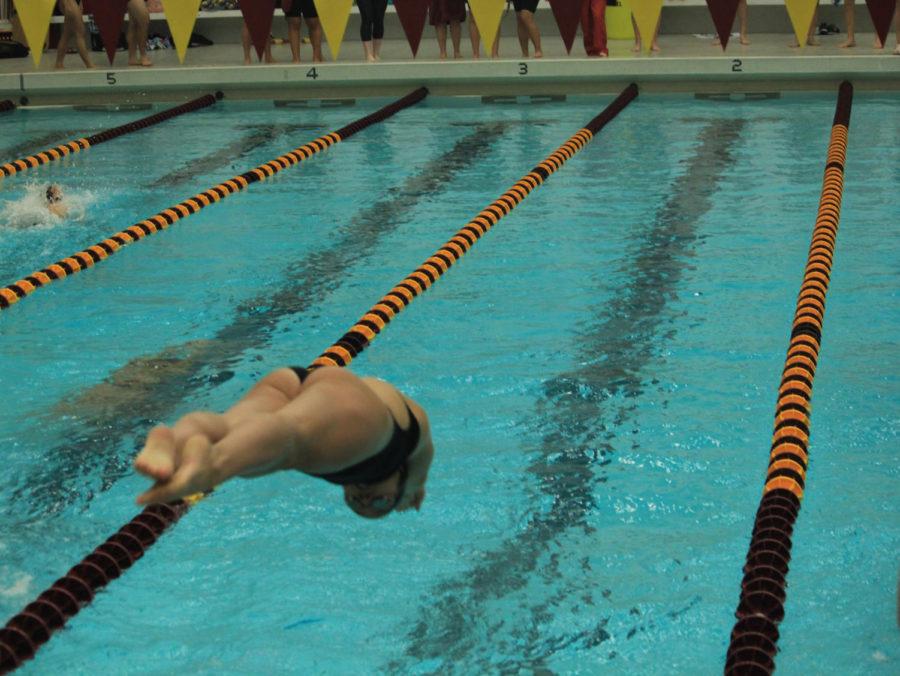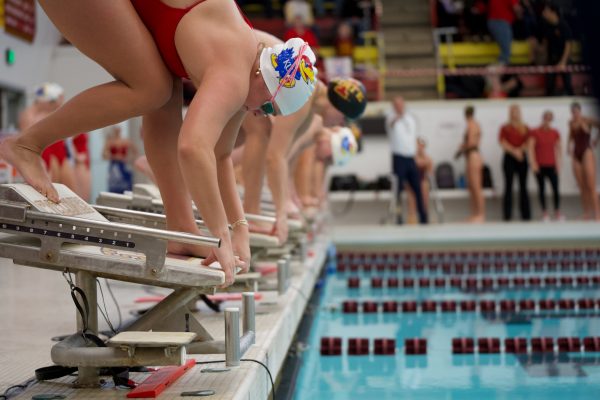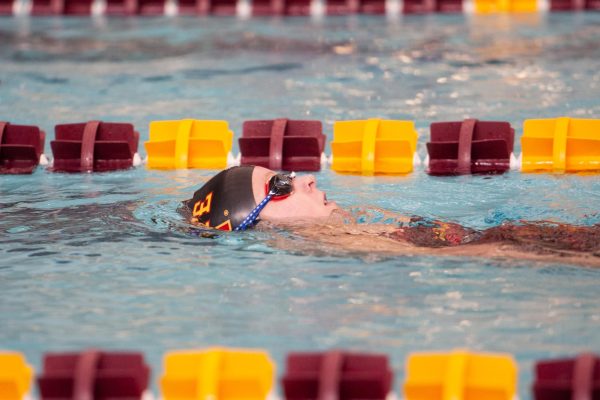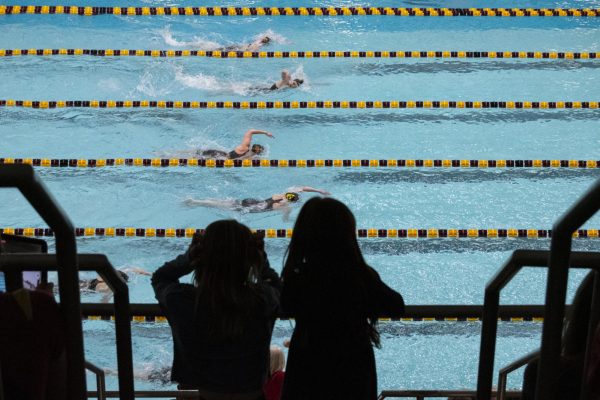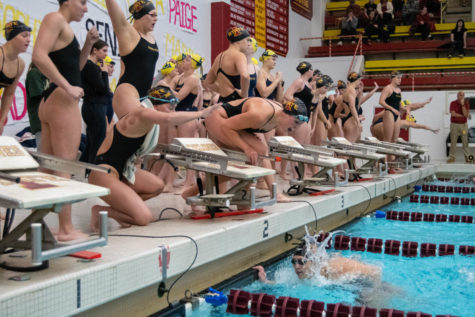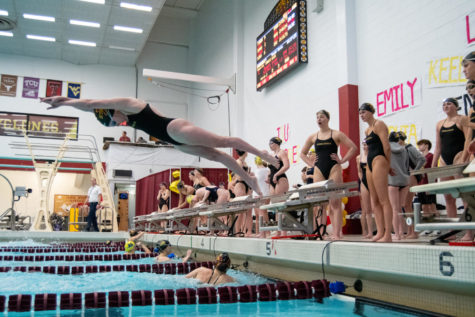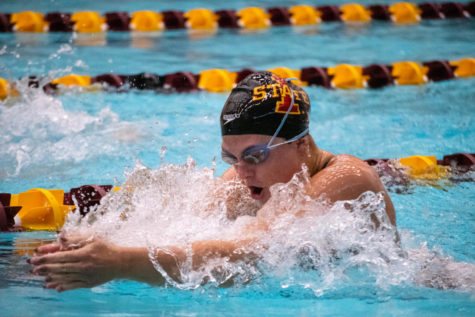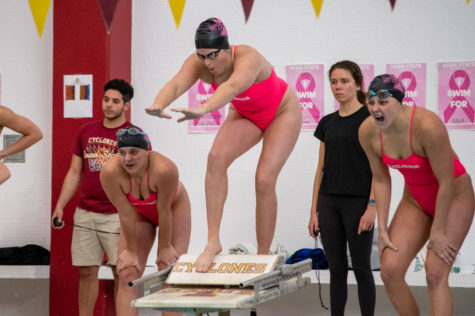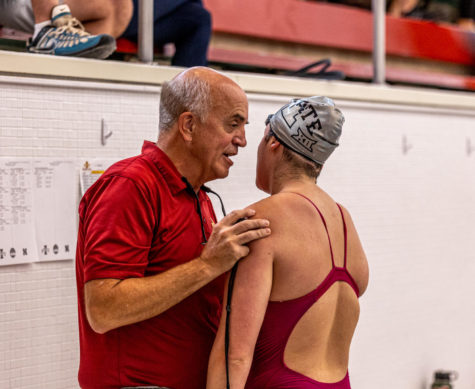Synchronized swimming brings different aspect to ISU swim
Iowa State Swimming and Diving alumni join the Iowa State Women’s Swimming and Diving team on Oct. 2.
November 12, 2015
ISU swimmer Haley Ruegemer begged her mom to let her join a synchronized swim team when she was in the fourth grade.
“My dad really wanted me to play softball, because he played baseball … but I think [my parents] know that once I start something, I’m committed to it,” Ruegemer said.
Synchronized swimming is similar to dancing in water. Anywhere from one to eight swimmers synchronize their movements with a musical accompaniment. Swimmers can compete in up to three events at competitions.
When performing, judges score teams in two categories. Artistic impression is the effect or feeling received after the performance, covering three areas: choreography, music and presentation.
Technical merit, the second judged category, is score-based execution and difficulty of the routine and synchronization. The results are made on a 10 point scale.
Ruegemer really liked how in synchronized swimming she could be artistic and choreograph her own routines, but explained that synchronized swimming can be very dangerous.
“There’s always the risk of being landed on, there’s a lot of concussions in [the sport],” Ruegemer said. “You always have to be in the right place, and I was not always in the right place, so I was pretty accident prone.”
Ruegemer enjoys the no-contact aspect of competitive swimming and how a swimmer can push herself as far as she can.
Past coaches told Ruegemer she had a good feel of the water, and Ruegemer said the skills she acquired from synchronized swimming have helped her as a competitive swimmer.
“We have to know what angle to put our hand at to move us through the water,” Ruegemer said. “That’s the same thing with swimming, except instead of pushing myself up in the water, I’m trying to push myself forward.”
There are a few misconceptions about synchronized swimming that Ruegemer wants to clear up — a swimmer can’t touch the bottom, and swimmers don’t wear goggles.
Reugemer competed from fourth grade until 10th grade, when she was faced with the decision to move to the West Coast to live with a host family and dedicate her life to the sport.
“To be at the level that I wanted to be at, I would’ve had to move to California and live with a host family, quit school and train during the day for eight hours,” Ruegemer said.
But Ruegemer wasn’t ready to give up her friends, family and school just yet. She had been competing on her high school swim team and decided to dedicate all of her time toward competitive swimming.
“I would really like to go back to my high school to help, maybe choreograph a routine for them if they needed me to,” Ruegemer said. “I helped coach a little when I first quit, which was fun, to be on the other side of the sport.”

